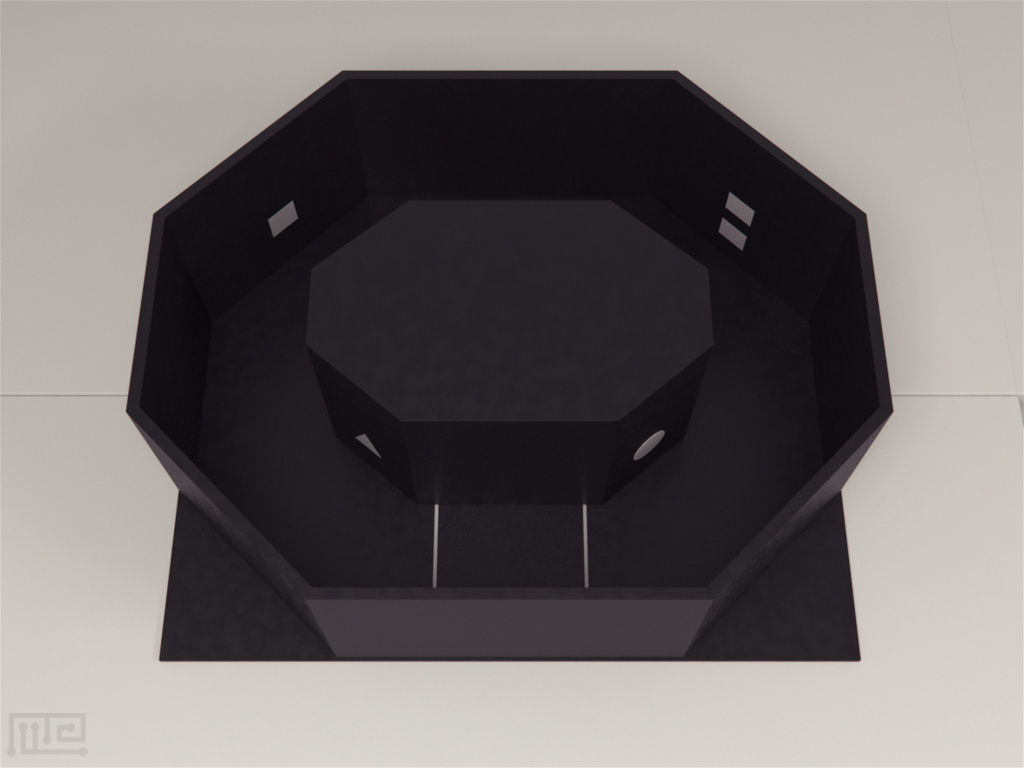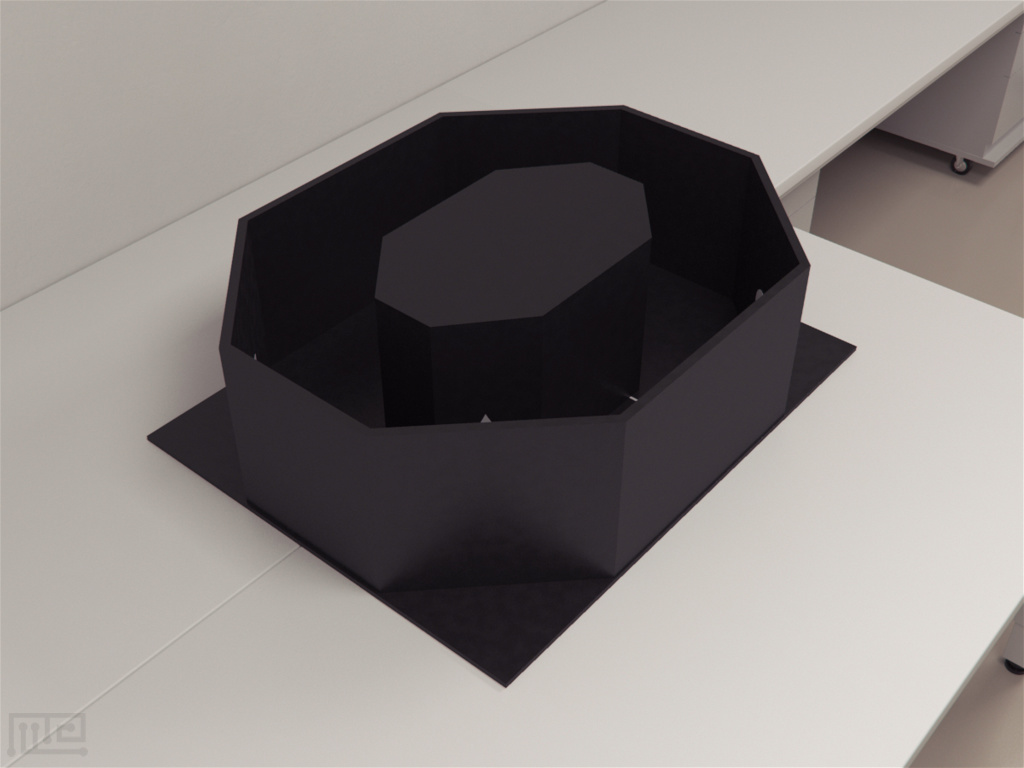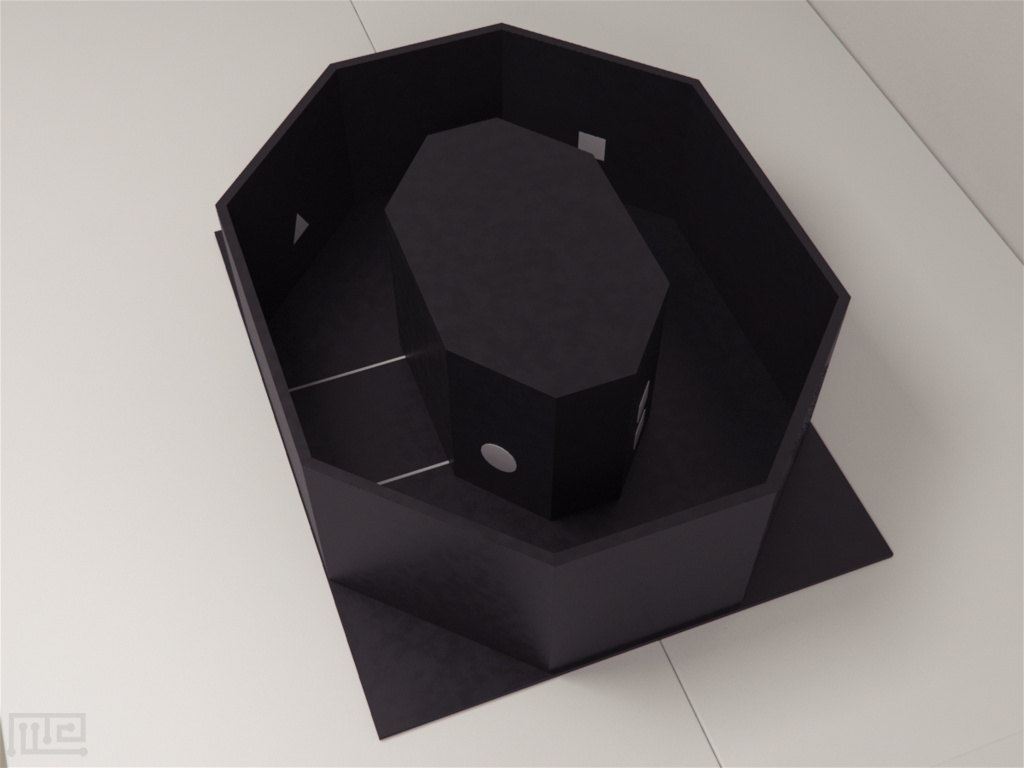The sentinel paper for the whisker guided exploration was used in rats. The maze inquiries voluntary exploration of an oval circuit with decreases in the number of rears and reversals and changes in the predominant location for injured rats, which spend more time in the inside of the turn compared to the outside. It is also expected that rats increased thigmotaxis after sham and brain-injury.
Price & Dimensions
Mouse
$ 1490
one maze- Width: 17cm
- Outer Length: 67cm
- Width: 53cm
- Height: 20cm
- Multiple colors available
- Starter box
Rat
$ 1590
one maze- Width: 25cm
- Outer Length: 100cm
- Width: 80cm
- Height: 30cm
- Multiple colors available
- Starter box
Documentation
Introduction
The Whisker Guided Exploration Task is performed to analyze the somatosensory morbidity in rodent models of diseases. It is a whisker dependent task in which the subject explores an oval track through thigmotaxic scanning. Whisker guided exploration task evaluates the underpinning mechanisms and anatomical structures responsible for causing alterations in the somatosensory circuit. The task can also be used for the assessment of therapeutic interventions to curtail the development of chronic pathological conditions associated with brain injury.
Whiskers are the highly sensitive detectors that help rodents in building the spatial representation of their environment, discriminating textured surfaces from one another and locating objects. The somatosensory circuit controls the rhythmic sweeping whisker movements in the brain (Petersen, 2007). Traumatic brain injury may cause significant damage to the somatosensory circuit and thus impair whisker sensitivity for locating and discriminating surfaces and objects.
The whisker guided exploration apparatus consists of an oval track and a start box. The walls of the apparatus are painted in black color. The walls of the apparatus have white geometric shapes to challenge the sensory perception of shapes and structures in rodents. The subject navigates through the straight lengths or corners in the track by identifying different geometric structures through whisker sensation. Other tasks that evaluate whiskers-based somatosensory behaviors include the Angle Entrance Task and the Gap Cross Test.
Apparatus and Equipment
The whisker guided exploration apparatus consists of a 25 cm wide oval track. The track is composed of straight paths and corners (turning points). The straight paths have an outer length of 50 cm with an inner length of 30 cm. The corners are formed by 30 cm long outer walls and 10 cm long inner walls. All walls of the apparatus have a height of 30 cm. The walls of the apparatus are black in color with white colored geometric shapes. These geometric shapes are found at a regular distance along the walls of the track. The apparatus is placed on a base measuring 100 cm long and 80 cm wide. The start box is marked at the longitudinal side of the apparatus.
Training Protocol
Clean the apparatus thoroughly prior testing. An external tracking and recording system such as Noldus Ethovision XT can be used with the whisker guided exploration apparatus for recording the subject’s behavior.
Pretraining
Place each subject individually in the start box and allow it to acclimate to the apparatus for 5 minutes.
Whisker Guided Exploration task
Place the subject individually in the start box of the apparatus. Allow the subject to explore the track for 10 minutes. Repeat the procedure for other subjects.
Evaluation of somatosensory behavior in rats induced with brain injury
Learoyd and Lifshitz (2012) evaluated Sprague-Dawley rats in the whisker guided exploration task to analyze somatosensory behavior alterations. Subjects were divided into two groups; One group underwent fluid percussion injury (FPI) whereas the other group underwent Sham procedure and acted as the control. The animals were tested on a whisker guided exploration task before the injury, and 1 and 4 weeks after injury. Results indicated a significant increase in exploration time post-injury in both treatment groups. FPI treated subjects spent more time in the inside of a corner than the sham group in the post-surgery evaluation. The number of rears and reversals also significantly reduced in the FPI treated group as compared to pre-surgery recordings.
Data Analysis
Following parameters can be recorded while using whisker guided exploration task
- Total distance covered
- Time spent exploring
- Time spent in the inner corner
- Time spent in the straight lengths
- Time spent in the outer corner
- Frequency of rears
- Frequency of reversals
Strengths and Limitations
Strengths
The whisker guided exploration task is an effective procedure to study sensory impairment in subjects with traumatic brain injury. It is easy to operate, cost-effective and time efficient. The task does not require training of subjects prior to testing. It is a non-invasive method and does not cause physical harm to the subjects. Whisker guided exploration task provides reliable results for a vast range of investigations ranging from causes of brain dysfunction to its recovery.
Limitations
Apparatus novelty decreases with repeated and longer trials. The whisker guided exploration task is conducted in the presence of bright overhead lights that may provide visual cues to the subjects. In order to eliminate this limitation, the observation time should be kept minimum, and the video recording should be conducted in red or dim light to avoid any disturbance in subject behavior. Cleaning of the apparatus is crucial to prevent lingering olfactory and disturbance cues affecting the subjects’ performance. Similar age, gender, and strain of the subjects must be used to avoid any variation in the exploratory behavior during the test. Mishandling of the subjects may induce stress or anxiety causing a significant impact on the subject’s exploratory behavior and performance in the task.
Summary
- The whisker guided exploration task evaluates any damage to the somatosensory circuit as a result of brain injury or other pathologies.
- The task can be used to evaluate the causes of neurological impairment and their prospective treatment options.
- In a whisker guided exploration task, the subject wanders in an oval circuit provided with geometrical shapes to assess its sensory environmental mapping through whiskers.
- The task must be conducted in dim light to avoid the provision of visual cues to the subjects.
- The whisker guided exploration task is also time effective and delivers results rapidly.
- The duration of testing should be moderate to preserve the novelty of the apparatus.
Selection of proper strain, age, and sex of subjects is important to prevent variation in exploratory behavior in a whisker guided exploration task.
References
- Learoyd, A. E., & Lifshitz, J. (2012). Comparison of Rat Sensory Behavioral Tasks to detect Somatosensory Morbidity after Diffuse Brain-Injury. Behavioural Brain Research, 226(1), 197-204. doi:10.1016/j.bbr.2011.09.016
- Petersen, C. C. (2007). The Functional Organization of the Barrel Cortex. Neuron, 56(2), 339-55. doi: 10.1016/j.neuron.2007.09.017



